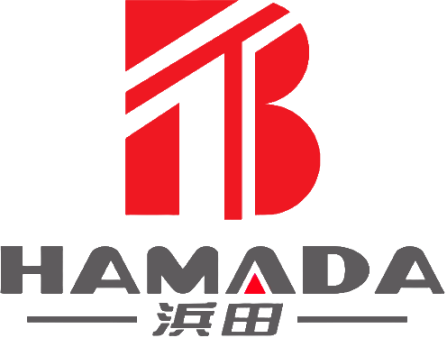English
 English
English Español
Español Português
Português русский
русский français
français 日本語
日本語 Deutsch
Deutsch Tiếng Việt
Tiếng Việt Italiano
Italiano Nederlands
Nederlands ไทย
ไทย Polski
Polski 한국어
한국어 Svenska
Svenska magyar
magyar Malay
Malay বাংলা
বাংলা Dansk
Dansk Suomi
Suomi हिन्दी
हिन्दी Pilipino
Pilipino Türk
Türk Gaeilge
Gaeilge عربى
عربى Indonesia
Indonesia norsk
norsk اردو
اردو čeština
čeština Ελληνικά
Ελληνικά Українська
Українська Javanese
Javanese فارسی
فارسی தமிழ்
தமிழ் తెలుగు
తెలుగు नेपाली
नेपाली Burmese
Burmese български
български ລາວ
ລາວ Latine
Latine Қазақ
Қазақ Euskal
Euskal Azərbaycan
Azərbaycan slovenský
slovenský Македонски
Македонски Lietuvos
Lietuvos Eesti Keel
Eesti Keel Română
Română Slovenski
Slovenski मराठी
मराठी Српски
Српски
NEWS
-
 Read More
Read More
A Giant Eye Exploring the Origins of the Universe: The Optical Marvel of the Subaru Telescope
As an international collaborative project led by the National Astronomical Observatory of Japan, its name comes from the Pleiades (M45), symbolizing the collective wisdom and global collaboration of the Japanese astronomical community.
-
 Read More
Read More
Space Industry: HarmonicDrive® and Humanity's First Round Trip to the Asteroid Belt
The space industry, as a cutting-edge field for human exploration of the universe and development of space resources, is developing at an unprecedented pace.
-
 Read More
Read More
Harmonic Drives: The "Space Joints" of NASA's Perseverance Rover's Robotic Arm
In February 2021, NASA's Perseverance rover successfully landed on the Martian surface, marking a new era in human exploration of Mars. One of the most striking technological highlights of this 1025-kilogram "Mars scientist" is its robotic arm system—five Harmonic Drive® units serve as the core transmission components, ensuring the precise operation of scientific instruments in the extreme Martian environment.
-
 Read More
Read More
Precision Drives Empowering Future Mobility: Innovative Applications of HarmonicDrive® in the Automotive Industry
In the wave of electrification and intelligent transformation in the automotive industry, a Japanese company is redefining the balance between luxury and environmental protection with its unique precision drive technology. HarmonicDrive®—a cutting-edge technology originating from the aerospace and astronomical observation fields—is now providing innovative powertrain solutions for luxury and environmentally friendly vehicles through lightweight, compact, and highly reliable product design.
-
 Read More
Read More
Harmonic Drive : High-Precision Transmission Technology in Multiple Fields
Harmonic Drive , with their high precision, lightweight design, and exceptional reliability, have become indispensable transmission components in modern industry. Their core advantage lies in harmonic drive technology, which achieves high reduction ratios through the elastic deformation of the flexspline and rigid wheel.
-
 Read More
Read More
Harmonic Drive Harmonic Reducers: Global Market Applications and Technological Leadership in Pipe Bending Machines
In the metal processing industry, pipe bending machines, as core equipment for forming complex pipes, rely heavily on the precision and stability of their transmission systems to directly determine product quality and production efficiency.
-
 Read More
Read More
Application and Exhibition of Harmonic's HMA Motors in Semiconductor Cleaning Equipment
Harmonic's HMA motors, with their superior performance, have become indispensable precision power sources in semiconductor cleaning equipment. During the cleaning and drying process, HMA motors (such as the HMAB12) deliver stable output speeds up to 4800 rpm, ensuring uniform drying of wafers during high-speed rotation and preventing residual droplets from impacting subsequent processes.
-
 Read More
Read More
Analysis of Harmonic Drive Harmonic Drive Gearbox Applications in the Global Semiconductor Cleaning Equipment Market
In the semiconductor manufacturing industry, cleaning equipment, as a critical link in wafer processing, places extremely stringent requirements on the precision and reliability of its transmission systems.
-
 Read More
Read More
High-Precision Applications of Harmonic Drive Harmonic Gear Reducers in Semiconductor Polishing Equipment
In the front-end processes of semiconductor manufacturing, chemical mechanical planarization (CMP) polishing equipment places extremely stringent requirements on the precision and reliability of transmission components.
-
 Read More
Read More
Analysis of Harmonic Drive Harmonic Drive Gearboxes' Global Market Application in Laser Processing Centers
In the field of laser processing equipment, high-precision transmission systems are a core element ensuring processing quality. Harmonic Drive harmonic drive gearboxes, with their unique technological advantages, have become a key component of transmission systems in laser processing centers worldwide.
-
 Read More
Read More
Harmonic Drive Harmonic Drive Gearboxes: Global Market Applications and Technological Advantages in Wafer Slicing Equipment
In the semiconductor manufacturing field, slicing machines, as core equipment in wafer processing, directly determine the quality and efficiency of wafer dicing through the precision and stability of their transmission systems.
-
 Read More
Read More
Harmonic Drive Shines at the 2025 CIIF: Innovation Drives, Shaping a New Blueprint for Industry
On September 17, 2025, the 21st China International Industry Fair (CIIF) grandly opened at the Shanghai National Exhibition and Convention Center. As a global leader in industrial robotics, Harmonic Drive showcased its four core product lines—harmonic reducers, planetary reducers, mechatronics products, and precision reducers—along with numerous innovative technologies. The stunning display captivated countless visitors and became a major highlight of the CIIF.












